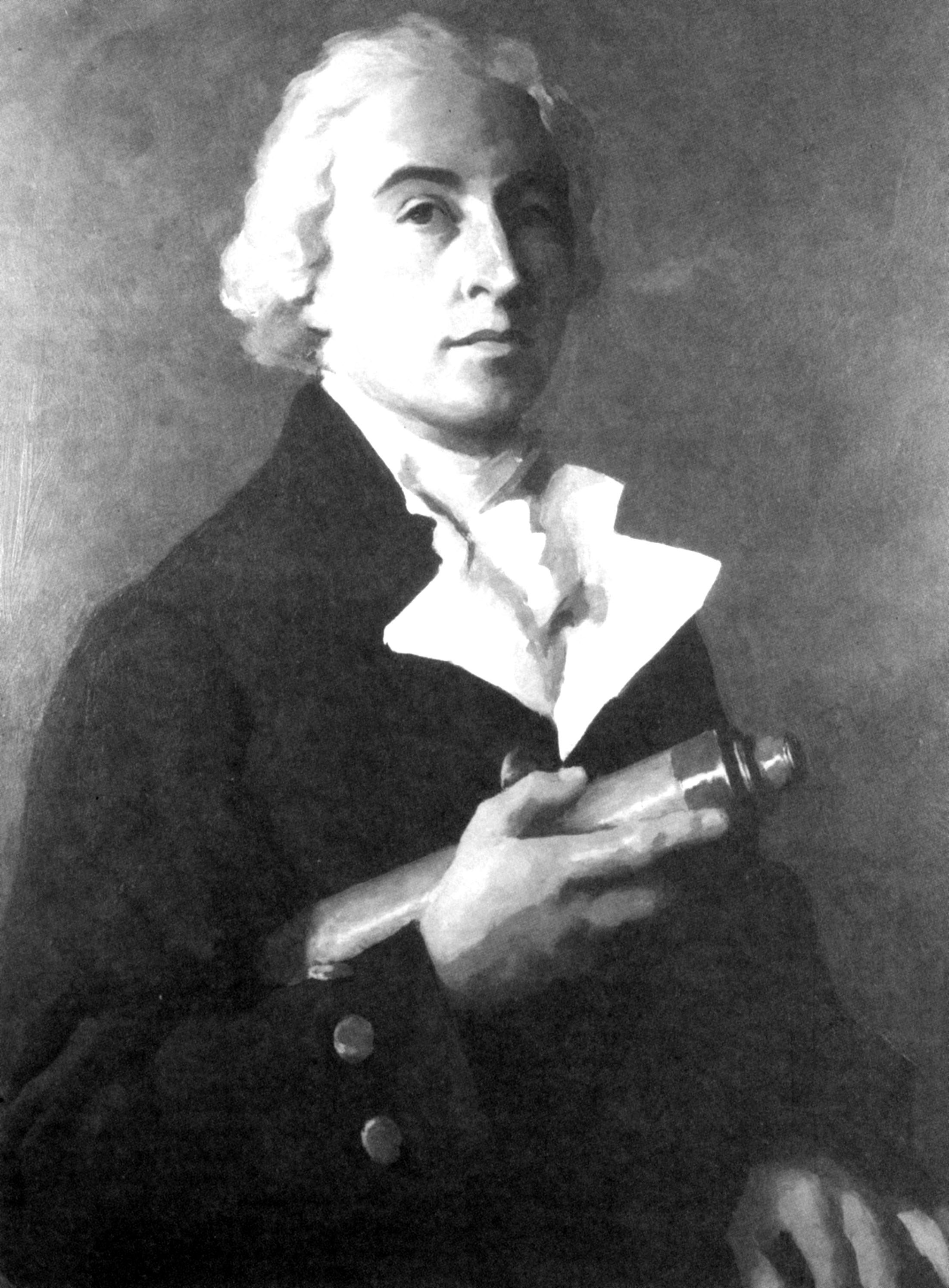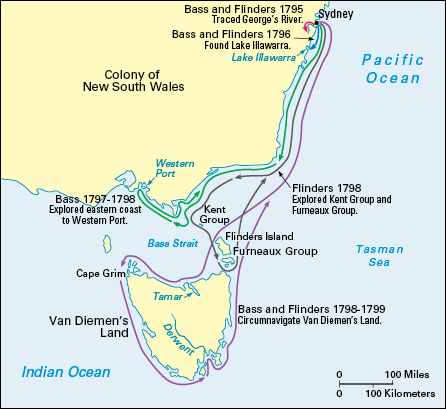Bass, George (1771-1803?), a British naval surgeon, won fame for his exploration of the eastern coast of Australia. Along with fellow explorer Matthew Flinders, Bass proved that a strait separated Van Diemen’s Land (now Tasmania) from the Australian mainland. (A strait is an area of water, or a channel, connecting two larger bodies of water.) The strait is now known as the Bass Strait.

Bass was born on Jan. 30, 1771, in Aswarby, Lincolnshire, in England. While a teenager, he spent several years as a surgeon’s apprentice. At the age of 18, he was certified as a surgeon’s mate and joined the British navy. In 1794, he transferred to the H.M.S. Reliance. The ship was due to take John Hunter to the British colony of New South Wales, where he was to serve as governor. On the Reliance, Bass met Flinders, who was serving as master’s mate, an assistant to the officer responsible for navigating the ship. The Reliance reached the settlement of Sydney in September 1795.
Shortly after arriving, Bass and Flinders decided to explore the coast of New South Wales. Bass had brought with him an 8-foot (2.4-meter) rowboat called Tom Thumb. Bass, Flinders, and Bass’s young servant, William Martin, explored Botany Bay on the east coast of Australia and traveled up the George’s (now spelled Georges) River. They reported their findings to Governor Hunter. This information led Hunter to establish the settlement of Banks Town (now a Sydney suburb spelled Bankstown).

In March 1796, Bass, Flinders, and Martin took another small boat, also called Tom Thumb, to explore the area south of Botany Bay. During this expedition, local Aboriginal people guided the party to the inland expanse of water now known as Lake Illawarra.
In late 1797 and early 1798, Bass explored Australia’s southern coast. Flinders was unable to join him on this journey. Bass sailed south to Western Port Bay in what is now the Australian state of Victoria. At the time, it was generally believed that Van Diemen’s Land was joined to the Australian mainland. But Bass made observations in Western Port Bay that made him suspect a strait separated Van Diemen’s Land from the mainland. Around the same time, Flinders also came to believe that Van Diemen’s Land was an island. In 1798 and 1799, Bass and Flinders sailed completely around Van Diemen’s Land, proving their theory correct. Following the suggestion of Flinders, Governor Hunter named the strait between Van Diemen’s Land and the mainland Bass’s Strait (now Bass Strait).
Bass had made scientific observations of the many plants and animals he had encountered during his voyages. In April 1799, he was elected to the Linnean Society of London, an organization that promotes the study of biology and zoology. In 1800, he traveled to England, where he met and married Elizabeth Waterhouse. She remained in England when Bass returned to Australia in 1801. Bass never went back to England.
In his last years, Bass made trade voyages to New Zealand and the Sandwich Islands (now Hawaii). In 1803, he disappeared while on a trading voyage from Sydney to Peru, in South America.
